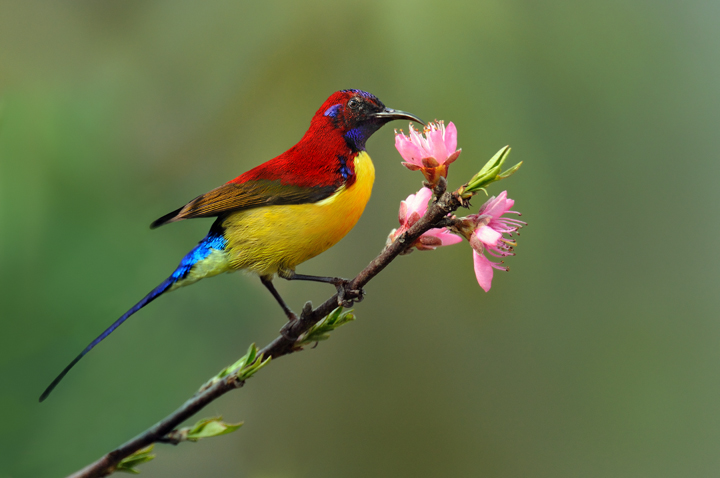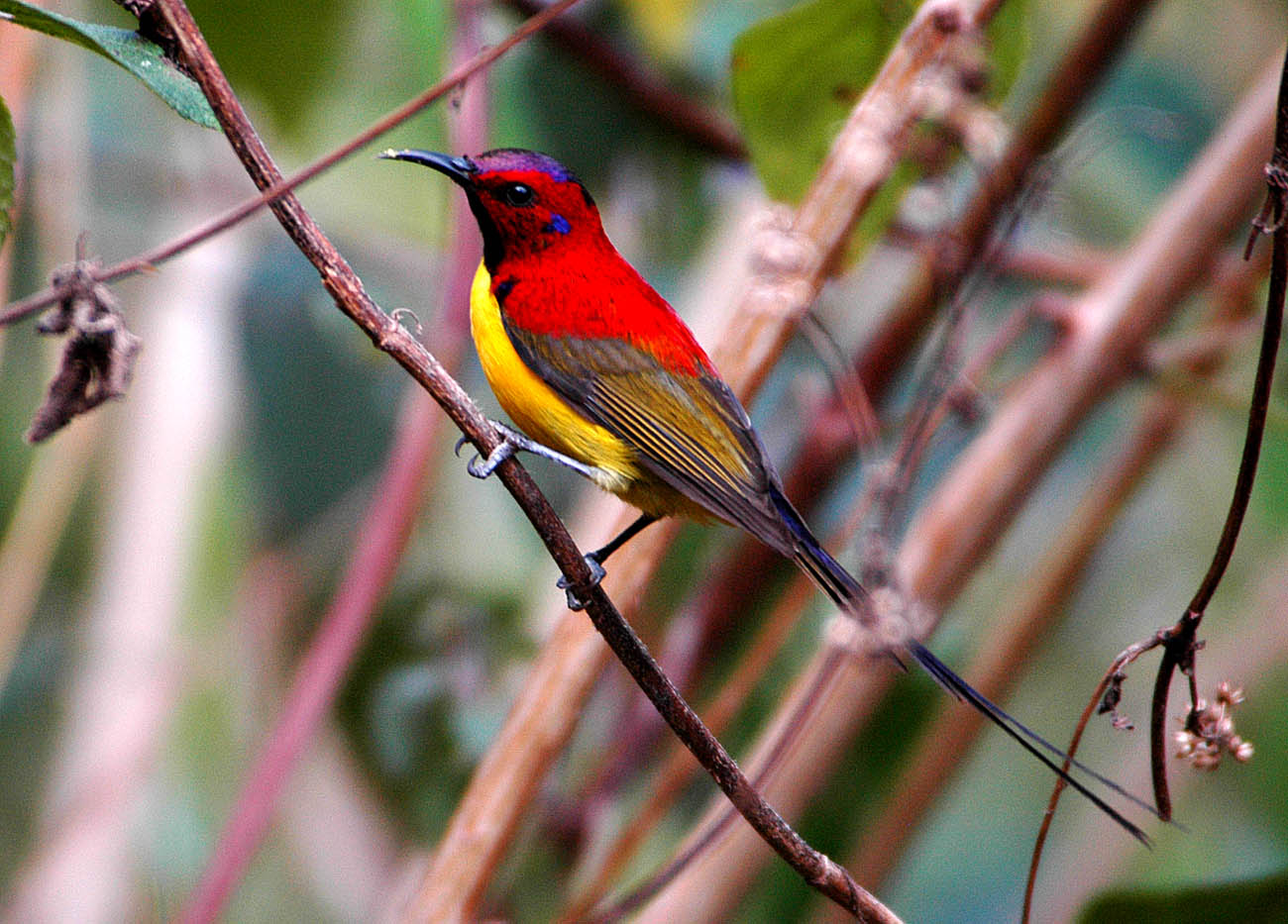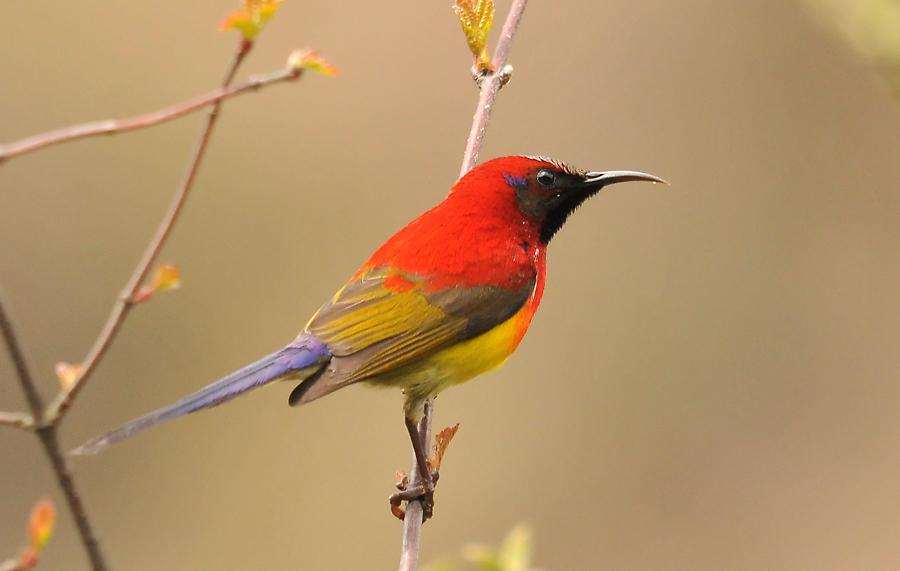
Aethopyga gouldiae
SUBFAMILY
Nectariniinae
TAXONOMY
Cinnyris gouldiae Vigors, 1831, Simla-Almora District,
Himalayas. Four subspecies.
OTHER COMMON NAMES
English: Mrs. Gould’s sunbird; French: Souimanga de Gould;
German: Gouldnektarvogel; Spanish: Nectarina de la Gould.
PHYSICAL CHARACTERISTICS
4.3 in (11 cm), but male’s tail may be 1.75 in (4.5 cm) longer;
male 0.23–0.28 oz (6.5–8.0 g), female 0.14–0.21 oz (4.0–6.1 g).
A glossy purple head and tail; red back with two stripes to the
bill on each side. Wings dull brown with yellow underparts
and rump.
DISTRIBUTION
A. g. annamensis: southern Vietnam, southern Laos, and Thailand;
A. g. dabryii: eastern Nagaland, west central and southern
China, southeastern Tibet, Manipur, Myanmar; A. g. gouldiae:
Himalayas from Sutlej Valley to Aruchanel Pradesh and southeastern
Tibet; A. g. isolata: south of River Brahmaputra in
northern Assam, Ngaland, Manipur, and south to Chittagong
Hills and northwestern Myanmar.
HABITAT
Highlands. Coniferous forest, oaks, scrub jungle, and rhododendrons.
BEHAVIOR
Energetic but shy.
FEEDING ECOLOGY AND DIET
Takes nectar from mistletoes and rhododendrons, and also eats
insects and spiders. Drinks readily from pools.
REPRODUCTIVE BIOLOGY
Breeds as high as 14,000 ft (4,270 m). Clutch of two or three
white eggs with small reddish brown marks laid mid-March to
August. Nest oval and composed of grass, cobwebs, moss,
fibers, and other vegetable matter, lined with down, and suspended
from fern or low bush. In India parasitized by Asian
emerald cuckoo (Chrysococcyx maculatus).
CONSERVATION STATUS
Not threatened; but uncommon.
SIGNIFICANCE TO HUMANS
None known.
Other popular Animals
Photo Gallery of - Gould’s sunbird




 Animalia Life
Animalia Life